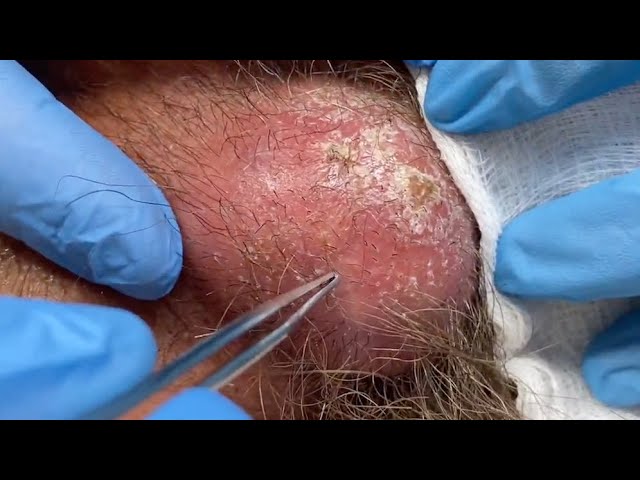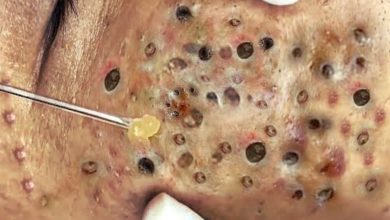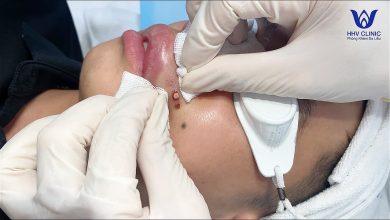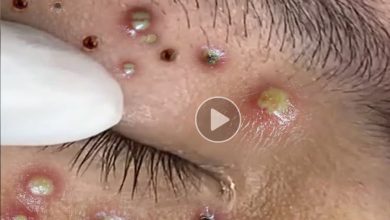Effective Drainage of an Infected Cyst Under the Chin: A Comprehensive Guide
Cysts can form in various parts of the body, and when an infection occurs, it can cause discomfort, pain, and swelling. A cyst under the chin, often referred to as a sebaceous or epidermoid cyst, can be particularly troublesome. When infected, these cysts can become red, tender, and swollen, leading to concerns about potential complications. In this article, we’ll explore how to effectively drain an infected cyst under the chin, the risks involved, and when to seek medical attention.

Understanding Cysts Under the Chin
A cyst is a sac-like pocket filled with fluid, air, or other material. Infected cysts occur when bacteria enter the cyst through a ruptured pore or other means, causing inflammation and pus build-up. Cysts under the chin are commonly sebaceous cysts, which form in sebaceous glands that secrete oil to lubricate the skin. When these glands get blocked, the oil accumulates, creating a cyst.
Signs of an Infected Cyst
An infected cyst under the chin can present the following symptoms:
- Redness and Swelling: The area around the cyst becomes inflamed and tender to the touch.
- Pain and Tenderness: The cyst may be painful, especially when touched or when pressure is applied.
- Pus Drainage: If the cyst ruptures, it might release pus, which indicates an active infection.
- Warmth: The skin around the cyst may feel warm, indicating inflammation.
- Fever: In severe cases, an infection may lead to a low-grade fever.
How to Effectively Drain an Infected Cyst Under the Chin
If you have an infected cyst, it’s important to approach drainage with care to avoid further infection or complications. Here’s a step-by-step guide on how to safely drain an infected cyst under the chin.
1. Consult a Healthcare Professional First
Before attempting to drain an infected cyst, it’s critical to seek advice from a healthcare provider. A doctor can assess the cyst, confirm whether it’s infected, and provide recommendations for proper treatment. In some cases, they may need to perform a minor surgical procedure to safely drain the cyst.
2. Prepare Your Tools and Workspace
If the doctor determines that the cyst can be drained at home or under their supervision, they will ensure that the proper sterilization and technique are followed. If you’re attempting to do this yourself (which is not recommended unless instructed by a doctor), make sure to:
- Clean the Area: Wash your hands thoroughly with soap and water. Clean the affected area with an antiseptic or rubbing alcohol to reduce the risk of further infection.
- Sterilize Tools: Sterilize any instruments, such as a needle or lancet, using rubbing alcohol or by boiling them in water for several minutes.
- Prepare a Clean Cloth or Gauze: Have a sterile gauze pad ready to absorb any fluid that may drain out of the cyst.
3. Apply a Warm Compress
Before attempting to drain the cyst, apply a warm compress to the area for about 10 to 15 minutes, three to four times a day. The warmth helps soften the cyst and encourages the pus to come to the surface. This step may also relieve some discomfort associated with the cyst.
4. Puncture the Cyst (If Safe to Do So)
If the cyst has already formed a visible white or yellowish head, it might be ready to drain. Using a sterilized needle or lancet, carefully puncture the cyst at the center. Avoid applying excessive pressure, as this could force the pus deeper or cause the cyst to rupture unevenly.
5. Gently Squeeze the Cyst
Gently squeeze the sides of the cyst, but avoid forcing the contents out. If the cyst is not draining easily, it may be too early to drain it or may require medical assistance. If pus or fluid begins to drain, use sterile gauze or a clean cloth to absorb it.
6. Apply Antiseptic and Bandage the Area
Once the cyst has been drained, clean the area with an antiseptic solution to prevent further infection. Apply a clean bandage or sterile gauze to protect the area while it heals. Make sure to change the bandage and reapply antiseptic regularly.
7. Monitor the Healing Process
Over the next few days, monitor the cyst for signs of improvement or worsening. While some minor redness or swelling may persist, the infection should gradually subside. If you notice increased pain, spreading redness, or a fever, seek medical attention immediately as these could be signs of a more serious infection.
When to Seek Medical Attention
While some cysts can be drained at home with proper care, there are times when medical intervention is necessary:
- Persistent Infection: If the cyst continues to be red, swollen, and painful despite at-home treatment, a healthcare professional may need to drain the cyst under sterile conditions.
- Abscess Formation: If the cyst turns into an abscess, a healthcare provider may need to incise and drain it properly.
- Severe Pain or Fever: If you experience severe pain or a fever, it could indicate that the infection has spread or worsened.
- Large or Deep Cysts: Larger cysts, or those deep under the skin, may be difficult to drain without proper medical training.
Preventing Future Cyst Infections
To reduce the likelihood of cysts under the chin, consider the following:
- Practice Good Hygiene: Regularly cleanse your skin, especially areas prone to cysts. Use mild cleansers and avoid excessive touching of the skin.
- Avoid Squeezing Cysts: Squeezing cysts prematurely can increase the risk of infection.
- Consult a Dermatologist: If cysts are a recurring issue, a dermatologist can help address underlying causes, such as clogged pores or hormonal imbalances.
Conclusion
An infected cyst under the chin can be painful and troublesome, but with careful drainage and proper medical advice, most cases can be managed effectively. Always prioritize hygiene and safety when handling an infected cyst, and don’t hesitate to seek professional care if necessary. With the right approach, you can promote healing and prevent further complications.





